scenesofspace
111 posts
Latest Posts by scenesofspace

The Sun rises over Earth in a postcard illustrated by Soviet cosmonaut Alexei Leonov, recalling the 1965 mission when he became the first human to walk in space.
Apollo 11's Lunar Module Might Still Be Orbiting the Moon
After Neil Armstrong and Buzz Aldrin landed on the Moon 52 years ago today in the Lunar Module (aka Eagle), they rode the ascent stage of the LM back to rendezvous with Michael Collins in the Command Module (aka Columbia). After docking, Eagle was jettisoned and the three astronauts returned to Earth in Columbia. It was presumed that Eagle orbited the Moon until eventually crashing into the surface, but a recent analysis shows that the spacecraft may have entered a stable orbit and is still circling the Moon decades after the end of the mission, a priceless artifact of an historic achievement.
Most spacecraft in lunar orbit suffer from instability in their orbits due to the ‘lumpy’ nature of the lunar gravity which tends to cause the orbits to eventually get so elliptical that they hit the moon.
However, an amateur space fan wanted to narrow down the possible impact location and used orbit modelling software to propagate the orbit forwards in time until it hit the moon. He was surprised to find that it didn’t hit the moon, and remained in a stable orbit for decades, this suggests that the Eagle may still be orbiting the moon over 5 decades after being left there.
The paper detailing the analysis suggests that if Eagle has survived, it should be detectable by radar.
Visualization of How Fast a Ball Drops on Various Solar System Bodies
This is an animation of how quickly an object falls 1 km to the surfaces of solar system objects like the Earth, Sun, Ceres, Jupiter, the Moon, and Pluto. For instance, it takes 14.3 seconds to cover that distance on Earth and 13.8 seconds on Saturn.
It might be surprising to see large planets have a pull comparable to smaller ones at the surface, for example Uranus pulls the ball down slower than at Earth! Why? Because the low average density of Uranus puts the surface far away from the majority of the mass. Similarly, Mars is nearly twice the mass of Mercury, but you can see the surface gravity is actually the same… this indicates that Mercury is much denser than Mars.
(via @thekidshouldsee)
There Are Way More Rogue Planets Than We Thought
The galaxy is wild. Our solar system, with its surprising abundance of living creatures and nonstop radiation and asteroid showers, is a placid, private garden compared to the rest of it.
In particular, there are perhaps trillions of rogue planets (planetary bodies ranging from little rocky Earth-sized guys to super-Jupiter gas giants) in the Milky Way, including a surprisingly large fleet of the things right near the galactic core.
This is unusual, since the typical way we detect exoplanets is by marking their repeated procession across a star. But rogue planets, by definition, don’t orbit stars. So the way astronomers find them is a little different, requiring use of gravitational microlensing.
Gizmodo breaks it down:
Data gathered by NASA’s now-retired Kepler Space Telescope has revealed a small population of free-floating planets near the Galactic Bulge. The new finding raises hope that a pair of upcoming missions will result in further detections of unbound planets, which drift through space separated from their home stars….
It’s impossible to know what the conditions are like on these presumed rogue exoplanets, but [astronomer Iain] McDonald said they could be “cold, icy wastelands,” and, if similar in size to Earth, their surfaces would “closely resemble bodies in the outer Solar System, like Pluto.”
The new paper suggests the presence of a large population of Earth-sized rogue planets in the Milky Way. It’s becoming clear that free-floating planets are common. McDonald said his team is currently working to come up with a more precise estimate for how many of them might exist.
Did you catch that part about how McDonald’s team made this discovery using a now-retired telescope? Yeah. Apparently the new telescope projects coming online are both more powerful and (in particular) better equipped to detect gravitational lensing effects, and therefore more likely to detect rogue planets in the future.

The planet Uranus. Taken on November 14th 2009 at 3:52 am. Using the 98 in Hooker telescope.
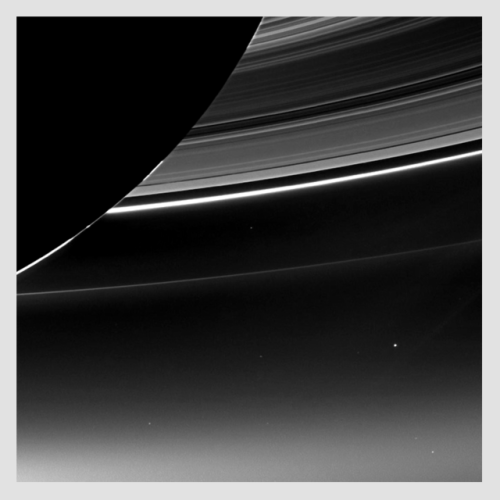

Photos of our own planet Earth taken by the Cassini spacecraft while it was orbiting Saturn, on 19 July 2013 and 12 April 2017, respectively.
50 Lovingly Restored Photographs of the Earth Taken by Apollo Astronauts
For his Earth Restored project, Toby Ord digitally remastered 50 photographs of the whole Earth taken by Apollo astronauts during their missions in the 60s and 70s.
The Apollo photographs are historic works of art. So in restoring them, I sought to bring out their own beauty. I refrained from recomposing the images by cropping, or trying to leave my own mark or interpretation. Perhaps in some cases this would make a more pleasing image, but it was not my aim.
And the Apollo photographs are also a scientific record of what our Earth looks like. In particular, what it would have looked like from the perspective of the astronaut taking the shot. So rather than pumping the saturation or adjusting the colours to what we think the Earth looks like, I wanted to allow us to learn from these photographs something about how it actually appears.
Many of these shots are new to me – the Apollo program and its scientific and cultural output continue to be revelatory 50 years later. (My only quibble here: the images on the website are not high-res. Would love to see much bigger versions of these.)


The Poles of Mars.
L: The North Pole, pictured down to the equator R: The South Pole, in more detail
Credit: ESA


A solar eclipse (left) happens when the moon gets in the way of the sun’s light and casts its shadow on Earth. During a lunar eclipse (right), Earth gets in the way of the sun’s light hitting the moon.

Hey Venus
lackyblue:
(by Thomas Shahan)



Mountains on the Moon (actually Pluto)
The leisurely pace of light speed
In a 45-minute video called Riding Light, Alphonse Swinehart animates the journey outward from the Sun to Jupiter from the perspective of a photon of light. The video underscores just how slow light is in comparison to the vast distances it has to cover, even within our own solar system. Light takes 8.5 minutes to travel from the Sun to the Earth, almost 45 minutes to Jupiter, more than 4 years to the nearest star, 100,000 years to the center of our galaxy, 2.5 million years to the nearest large galaxy (Andromeda), and 32 billion years to reach the most remote galaxy ever observed.1 The music is by Steve Reich (Music for 18 Musicians), whose music can also seem sort of endless.
If you’re impatient, you can watch this 3-minute version, sped up by 15 times:
This isn’t strictly true. As I understand it, a photon that just left the Sun will never reach that most remote galaxy.↩
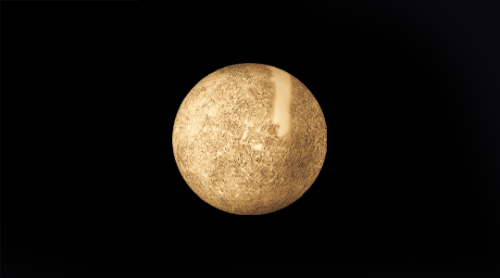
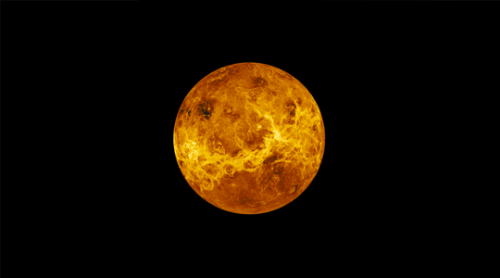
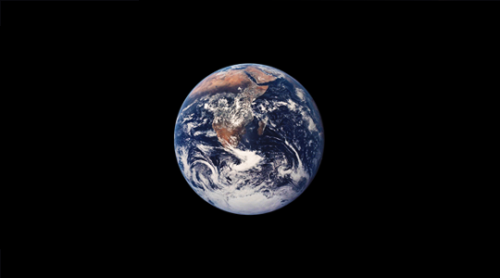
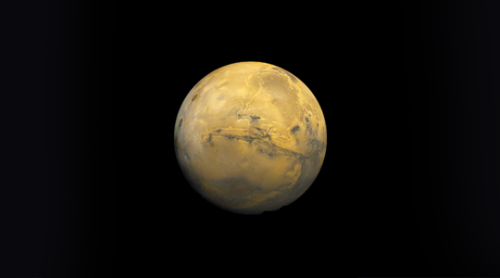
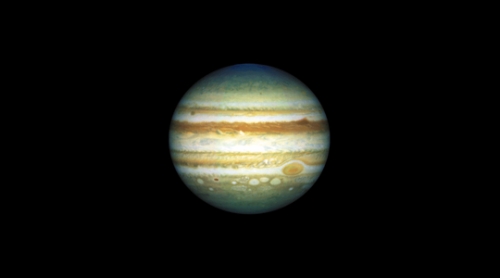
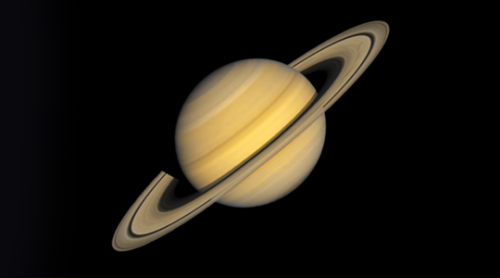
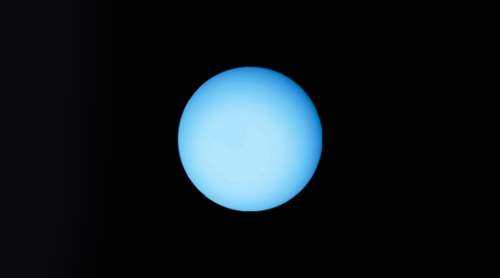
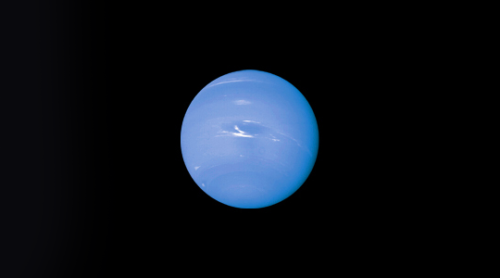
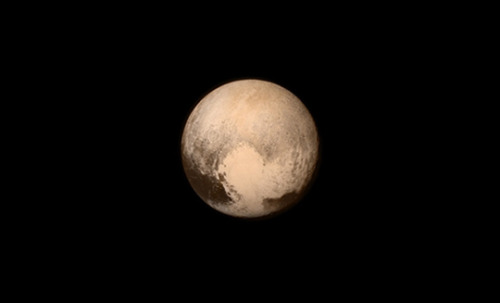
All here…
PLUTO





latest Pluto images released Sept 10, 2015 by NASA. Second to last is Pluto’s moon Charon. Last is the original “up close” image of Pluto. Images taken by NASA’s New Horizons Spacecraft.
Subscribe now to AllTimeTopScience on YouTube!
Here's What 10 Million Stars Look Like
Using the Dark Energy Camera at the Cerro Tololo observatory in Chile, astronomers took an image of the stars clustered around the center of our Milky Way galaxy that shows about 10 million stars. Check out the zoomable version for the full experience.
Looking at an image like this is always a bit of a brain-bender because a) 10 million is a huge number and b) the stars are so tightly packed into that image and yet c) that image shows just one tiny bit of our galactic center, d) our entire galaxy contains so many more stars than this (100-400 billion), and e) the Universe perhaps contains as many as 2 trillion galaxies. And if I’m remembering my college math correctly, 400 billion × 2 trillion = a metric crapload of stars. (via bad astronomy)
Watch a NASA Spacecraft Touch Down On an Asteroid to Collect a Sample
On Tuesday, NASA’s OSIRIS-REx spacecraft touched down on an asteroid called Bennu for about six seconds in order to collect a mineral sample to bring back to Earth.
The Origins Spectral Interpretation Resource Identification Security - Regolith Explorer spacecraft will travel to a near-Earth asteroid, called Bennu (formerly 1999 RQ36), and bring at least a 2.1-ounce sample back to Earth for study. The mission will help scientists investigate how planets formed and how life began, as well as improve our understanding of asteroids that could impact Earth.
The video above is a time lapse sequence of the touch down, sampling, and subsequent take off.
These images were captured over approximately a five-minute period. The imaging sequence begins at about 82 feet (25 meters) above the surface, and runs through the back-away maneuver, with the last image in the sequence taken at approximately 43 feet (13 meters) in altitude – about 35 seconds after backing away. The sequence was created using 82 SamCam images, with 1.25 seconds between frames.
Apart Together
October 31, 2000 was the last day all humans were together on Earth. That day, the rocket containing the crew of Expedition 1 lifted off from the Baikonur Cosmodrome in Kazakhstan and carried them to the International Space Station for a long-term stay. Fittingly, the mission left from the same launchpad that was used to launch Yuri Gagarin into space on April 2, 1961, which was the first time in history that all humans were not together on Earth. Ever since the Expedition 1 crew docked, there’s been an uninterrupted human presence on the ISS, which may continue until 2028 or 2030, by which time there may be humans on the Moon or Mars on a permanent basis. Will humans ever be only Earth-bound again?
BTW, I guess you could argue that the ISS isn’t really separate enough from Earth or that since regular commercial airplane flights began, humans have been separate from the Earth. You could also say that at any given time, thousands of people are in the air while jumping and therefore not on the Earth with the rest of us. I don’t find any of those arguments meaningful. Perhaps someday if space travel is more routine – “just popped up into orbit to visit my daughter” – and the human population is much more distributed, these same distinctions won’t hold, but for now the ISS is definitely apart from the Earth in a way that flying or jumping are not.

Circling the Sun (Mercury meets Venus)


The plane of the ecliptic
One way the universe might end
My favorite astrophysicist Katie Mack recently reposted a Cosmos article she wrote about a relatively obscure model for the total annihilation of the universe, called “vacuum decay.”
Essentially, what vacuum decay relies on is the fact that we don’t know for sure whether space is in the lowest energy, most stable possible state (a true vacuum) or at an adjacent, slightly higher energy level (a false vacuum). Space could be only metastable, and a random quantum fluctuation or sufficiently high level energy event could push part of the universe from the false vacuum to the true one. This could cause “a bubble of true vacuum that will then expand in all directions at the speed of light. Such a bubble would be lethal.”
It’s compellingly badass, and as Mack notes, frightfully efficient. First, it’s not the slow petering out that is heat death. Also, it wouldn’t just eliminate our current universe, but all possibility of a universe anything like ours. Vacuum decay destroys space like Roman generals salting the earth at Carthage.
The walls of the true vacuum bubble would expand in all directions at the speed of light. You wouldn’t see it coming. The walls can contain a huge amount of energy, so you might be incinerated as the bubble wall ploughed through you. Different vacuum states have different constants of nature, so the basic structure of matter might also be disastrously altered. But it could be even worse: in 1980, theoretical physicists Sidney Coleman and Frank De Luccia calculated for the first time that any bubble of true vacuum would immediately suffer total gravitational collapse.
They say: “This is disheartening. The possibility that we are living in a false vacuum has never been a cheering one to contemplate. Vacuum decay is the ultimate ecological catastrophe; in a new vacuum there are new constants of nature; after vacuum decay, not only is life as we know it impossible, so is chemistry as we know it.
"However, one could always draw stoic comfort from the possibility that perhaps in the course of time the new vacuum would sustain, if not life as we know it, at least some creatures capable of knowing joy. This possibility has now been eliminated.”
A Short History of Black Holes on Radio Telescopes
So, you’ve probably heard by now that we have our first ever photographs of a black hole and its event horizon. But it’s not like black holes have just been theoretical entities this entire time, awaiting photography’s blessing to finally be anointed as real. We’ve been detecting black holes for a long time now using radio telescopes and infrared cameras. It may be outside the visible spectrum, but that doesn’t mean it ain’t real, son!
The story begins in the mid-1900s when astronomers expanded their horizons beyond the very narrow range of wavelengths to which our eyes are sensitive. Very strong sources of radio waves were discovered and, when accurate positions were determined, many were found to be centered on distant galaxies. Shortly thereafter, radio antennas were linked together to greatly improve angular resolution. These new “interferometers” revealed a totally unexpected picture of the radio emission from galaxies–the radio waves did not appear to come from the galaxy itself, but from two huge “lobes” symmetrically placed about the galaxy….
Ultimately this led to the technique of Very Long Baseline Interferometry (VLBI), in which radio signals from antennas across the Earth are combined to obtain the angular resolution of a telescope the size of our planet! Radio images made from VLBI observations soon revealed that the sources at the centers of radio galaxies are “microscopic” by galaxy standards, even smaller than the distance between the sun and our nearest star.
When astronomers calculated the energy needed to power radio lobes they were astounded. It required 10 million stars to be “vaporized,” totally converting their mass to energy using Einstein’s famous equation E = mc2! Nuclear reactions, which power stars, cannot even convert 1 percent of a star’s mass to energy. So trying to explain the energy in radio lobes with nuclear power would require more than 1 billion stars, and these stars would have to live within the “microscopic” volume indicated by the VLBI observations. Because of these findings, astronomers began considering alternative energy sources: supermassive black holes.
We’ve also been tracing the orbits of planets, stars, and other objects that do give off conventional light. All this tracks back to suggest the supermassive black holes that Laplace et al first theorized about hundreds of years ago.
So, we knew what we were looking for. That’s how we were able to find it. And boom! Now we’ve got its photograph too. No more hiding from us, you goddamn light-devouring singularities. We’ve got your number.
Neutron Stars and Nuclear Pasta. Yummy!
The latest video from Kurzgesagt is a short primer on neutron stars, the densest large objects in the universe.
The mind-boggling density of neutron stars is their most well-known attribute: the mass of all living humans would fit into a volume the size of a sugar cube at the same density. But I learned about a couple of new things that I’d like to highlight. The first is nuclear pasta, which might be the strongest material in the universe.
Astrophysicists have theorized that as a neutron star settles into its new configuration, densely packed neutrons are pushed and pulled in different ways, resulting in formation of various shapes below the surface. Many of the theorized shapes take on the names of pasta, because of the similarities. Some have been named gnocchi, for example, others spaghetti or lasagna.
Simulations have demonstrated that nuclear pasta might be some 10 billion times stronger than steel.
The second thing deals with neutron star mergers. When two neutron stars merge, they explode in a shower of matter that’s flung across space. Recent research suggests that many of the heavy elements present in the universe could be formed in these mergers.
But how elements heavier than iron, such as gold and uranium, were created has long been uncertain. Previous research suggested a key clue: For atoms to grow to massive sizes, they needed to quickly absorb neutrons. Such rapid neutron capture, known as the “r-process” for short, only happens in nature in extreme environments where atoms are bombarded by large numbers of neutrons.
If this pans out, it means that the Earth’s platinum, uranium, lead, and tin may have originated in exploding neutron stars. Neat!
Actually, Mercury Is Our Closest Planetary Neighbor
If you look at the orbits of the planets adjacent to the Earth’s orbit (Venus & Mars), you’ll see that Venus’s orbit is closest to our own. That is, at its closest approach, Venus gets closer to Earth than any other planet. But what about the average distance?
According to this article in Physics Today by Tom Stockman, Gabriel Monroe, and Samuel Cordner, if you run a simulation and do a proper calculation, you’ll find that Mercury, and not Venus or Mars, is Earth’s closest neighbor on average (and spends more time as Earth’s closest neighbor than any other planet):
Although it feels intuitive that the average distance between every point on two concentric ellipses would be the difference in their radii, in reality that difference determines only the average distance of the ellipses’ closest points. Indeed, when Earth and Venus are at their closest approach, their separation is roughly 0.28 AU – no other planet gets nearer to Earth. But just as often, the two planets are at their most distant, when Venus is on the side of the Sun opposite Earth, 1.72 AU away. We can improve the flawed calculation by averaging the distances of closest and farthest approach (resulting in an average distance of 1 AU between Earth and Venus), but finding the true solution requires a bit more effort.
What the calculation also shows is that Mercury is the closest planetary neighbor to every planet, on average. Also, the authors of the paper don’t explicitly mention this, but the Sun (at 1 AU) is closer on average to the Earth than even Mercury (1.04 AU).
Neutron Stars and Nuclear Pasta. Yummy!
The latest video from Kurzgesagt is a short primer on neutron stars, the densest large objects in the universe.
The mind-boggling density of neutron stars is their most well-known attribute: the mass of all living humans would fit into a volume the size of a sugar cube at the same density. But I learned about a couple of new things that I’d like to highlight. The first is nuclear pasta, which might be the strongest material in the universe.
Astrophysicists have theorized that as a neutron star settles into its new configuration, densely packed neutrons are pushed and pulled in different ways, resulting in formation of various shapes below the surface. Many of the theorized shapes take on the names of pasta, because of the similarities. Some have been named gnocchi, for example, others spaghetti or lasagna.
Simulations have demonstrated that nuclear pasta might be some 10 billion times stronger than steel.
The second thing deals with neutron star mergers. When two neutron stars merge, they explode in a shower of matter that’s flung across space. Recent research suggests that many of the heavy elements present in the universe could be formed in these mergers.
But how elements heavier than iron, such as gold and uranium, were created has long been uncertain. Previous research suggested a key clue: For atoms to grow to massive sizes, they needed to quickly absorb neutrons. Such rapid neutron capture, known as the “r-process” for short, only happens in nature in extreme environments where atoms are bombarded by large numbers of neutrons.
If this pans out, it means that the Earth’s platinum, uranium, lead, and tin may have originated in exploding neutron stars. Neat!

Toute la nuit sous la lune ronde à faire le tour de l'étang
Bashô / © Pascal Picco, Pleine lune du mercredi 8 avril 2020
The Curiosity Rover Captures a 1.8 Gigapixel Panorama of Mars
Late last year, NASA’s Curiosity rover took over a thousand photos of the Martian landscape while exploring a mountainside. NASA stitched the photos together and recently released this 1.8 gigapixel panorama of Mars (along with a mere 650 megapixel panorama, pictured above). Here’s a version you can pan and zoom:
And a narrated video of the panorama:
Both panoramas showcase “Glen Torridon,” a region on the side of Mount Sharp that Curiosity is exploring. They were taken between Nov. 24 and Dec. 1, when the mission team was out for the Thanksgiving holiday. Sitting still with few tasks to do while awaiting the team to return and provide its next commands, the rover had a rare chance to image its surroundings from the same vantage point several days in a row.
I like how NASA is casually suggesting that the rover is just kinda taking some vacation snaps while waiting on friends.
Space Robot Roll Call
Emily Lakdawalla of the Planetary Society filed a report on humanity’s current roster of spacecraft currently exploring the solar system (and beyond).
Chang'e-4 and Yutu-2 are now past their prime mission and are in their extended mission phases. Their companion SmallSat, Longjiang-2, will crash into the Moon on 31 July to bring its mission to an intentional end. Parker Solar Probe is near aphelion as of 1 July and will reach its third death-defying solar perihelion on 1 September. BepiColombo completed its near-Earth commissioning phase on 5 April and is now settling into its long-cruise phase. Earlier this year, the ESA-JAXA Mercury mission was racing ahead of Earth on an inside track, but its elliptical orbit has now taken it farther from the Sun than Earth, allowing Earth to catch up. It will return to Earth’s neighborhood in April 2020 for a flyby.
I counted roughly 30 different probes and rovers in operation, most of them gathered around the Moon and Mars. Sure, where’s my jetpack and flying car and all that, but the fact that humanity has more than two dozen robots currently exploring the solar system seems pretty futuristic to me.
Wikipedia also has a page listing currently active probes and of course there’s the lovely & informative spaceprob.es as well.